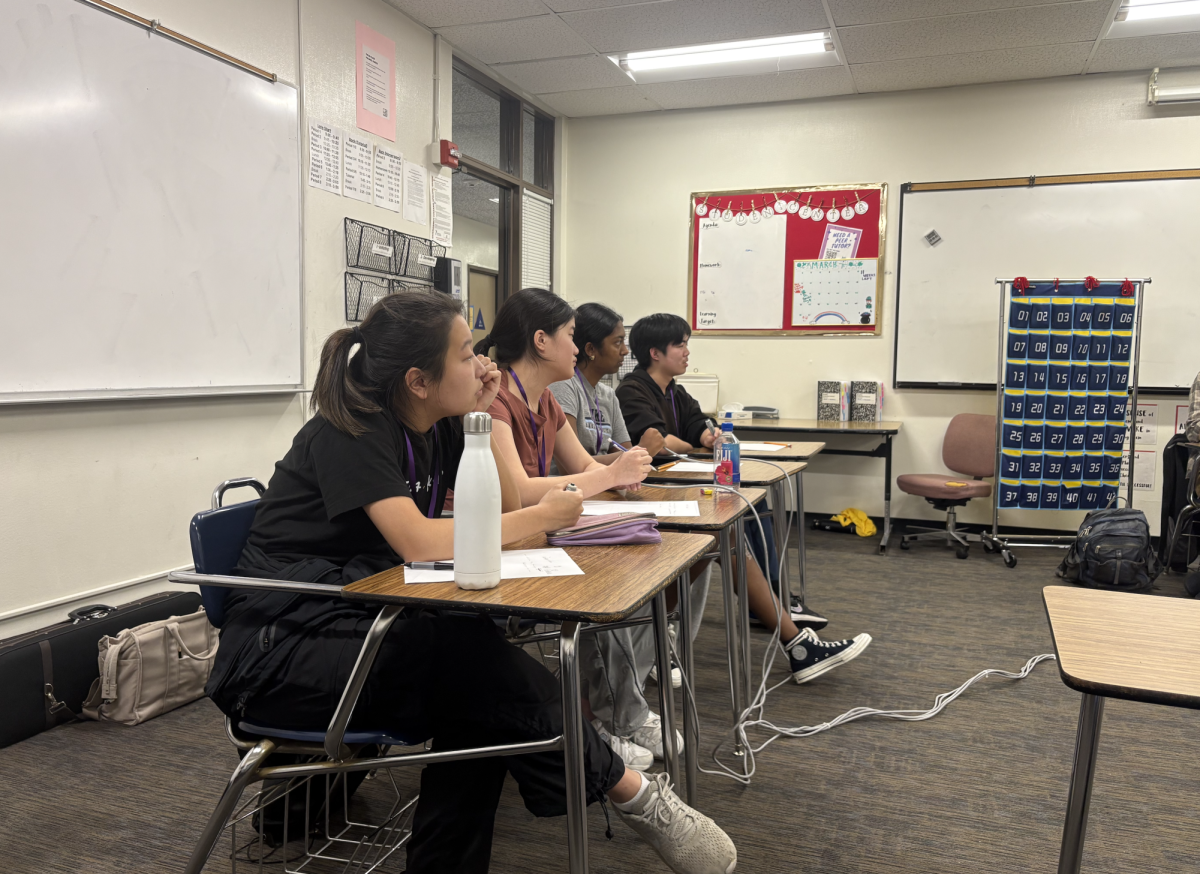Sage Hill teachers continue to enforce their own policies restricting cellphone use in the classroom while the nation sees 35 states adopt bans on using phones during school hours this year.
Sage Hill is forging its own path amid the national discussion that has seen elected officials on both sides of the isle unite over shared concerns about the impact of cell phone use in the classroom. As a private institution, Sage Hill has the freedom to implement its own phone policy for students. Its teachers are granted control over phone use in their classrooms. This is in addition to a policy introduced last year requiring all freshmen to use wall-mounted phone holders during classes.
Many teachers at Sage Hill believe high school students should already have the necessary discipline and respect to restrain themselves from phone use in class.
“Students are mature enough that they can deal with both the responsibility and consequences of it,” said Matt Vadeboncoeur, Dean of Academic Technology and History teacher.
Elected officials across the nation appear to be less optimistic about students’ self-control over their devices. However, states widely vary in how they’re rolling out bans on phones at school. New York and Arkansas adopted the strictest form of control among the states, a bell-to-bell cellphone ban that restricts phone access throughout the entire school day.
“I know our young people succeed when they’re learning and growing, not clicking and scrolling — and that’s why New York continues to lead the nation on protecting our kids in the digital age,” New York Gov. Kathy Hochul said in her public address.
New York City Public Schools (NYCPS) claims backpacks are not a suitable storage option and schools must provide alternate storage systems like lockers or magnetic pouches. While this rule is intended to minimize distraction, many educators, parents and students claim that these policies are excessive and a detriment to safety in the case of an emergency.
Consequently, other states like Kentucky and Utah have adopted milder forms of phone restriction that limit phones only during instructional times. Students are still allowed to use their phones between classes, and simply placing the phone out of sight in a backpack is often sufficient to meet in-class requirements. This moderate approach to phone policy invokes significantly more public support: a 2025 Pew Research Center found that 74% of U.S. adults support an in-class ban compared to 44% for an all-day ban.
Around half of states simply require or recommend that schools provide phone policies to families. California follows this approach as the state with the highest student enrollment at 6.86 million.
“We know that excessive smartphone use increases anxiety, depression and other mental health issues — but we have the power to intervene,” California Gov. Gavin Newsom said after signing the bill last September.
July 1, 2026, the Phone-Free Schools Act requires all California public and charter schools to create new phone policies and enact them. A study conducted by UC Irvine earlier this month reveals growing support for this act, with an approval rating of 82% among California adults.
Districts around California have launched different phone policies in preparation for the new school year. While Fullerton and Los Angeles school districts require students to store away phones for the full school day, Newport-Mesa Unified School District limits restrictions to instructional time, and Palm Springs Unified School District permits non-disruptive use throughout the school day.
Students agree that they do not need phone holders to abstain from their usage.
“Much of the class content is important and valuable enough that I don’t feel the need to be on my phone,” junior Maxwell Lee said.
Sage Hill’s small average class size should be a considerable factor, Vadeboncoeur said.
“I’ve taught public [schools] as well, and you’re talking upwards of 40 kids per room sometimes. So that’s a huge disparity in terms of 40 phones to potentially manage, with students using them and causing distractions, versus 16,” Vadeboncoeur said.
Other teachers, however, are worried about students’ rising dependence on their phones and believe that strict phone policies are a necessary step in alleviating that.
“I enforce a strict cell phone policy, which I believe better helps students focus on the content and skills we are learning,” History teacher Stephen Schumacher said.





